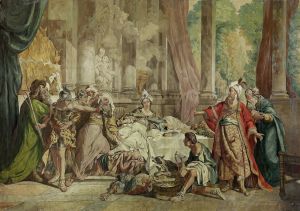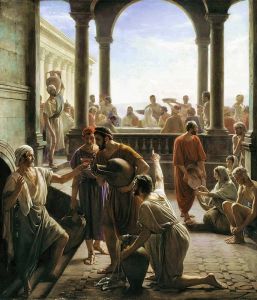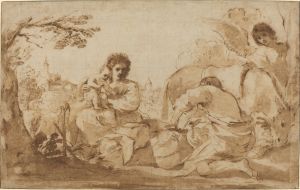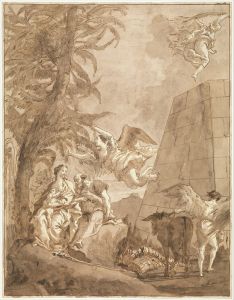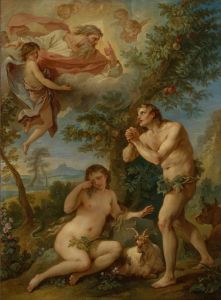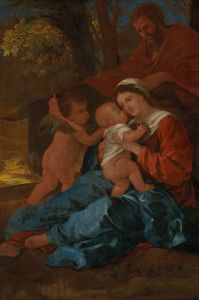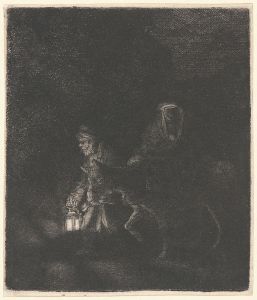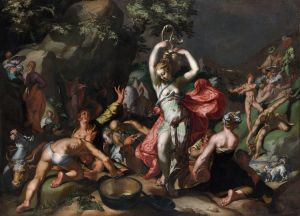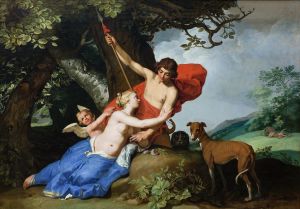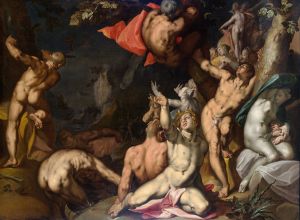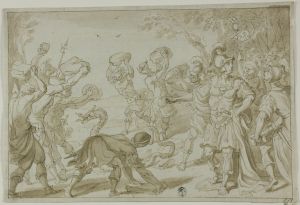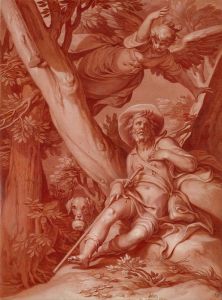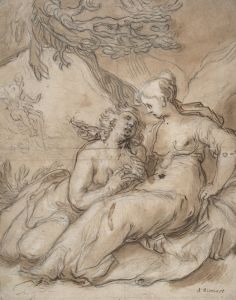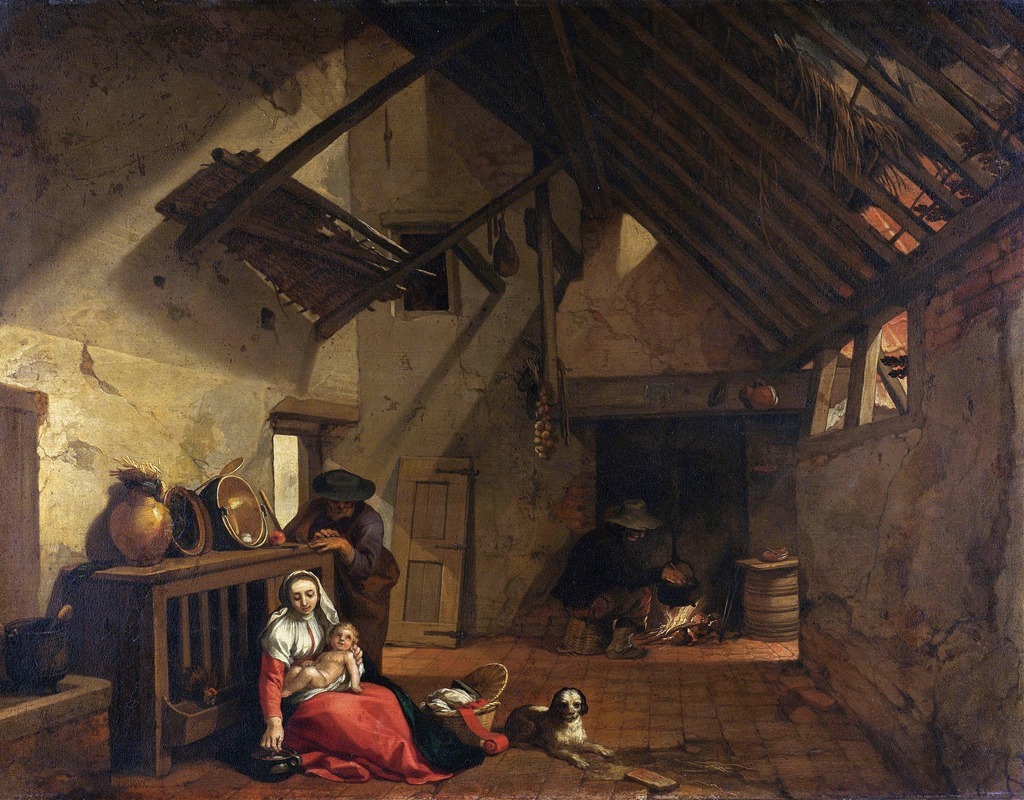
The Rest on the Flight into Egypt
A hand-painted replica of Abraham Bloemaert’s masterpiece The Rest on the Flight into Egypt, meticulously crafted by professional artists to capture the true essence of the original. Each piece is created with museum-quality canvas and rare mineral pigments, carefully painted by experienced artists with delicate brushstrokes and rich, layered colors to perfectly recreate the texture of the original artwork. Unlike machine-printed reproductions, this hand-painted version brings the painting to life, infused with the artist’s emotions and skill in every stroke. Whether for personal collection or home decoration, it instantly elevates the artistic atmosphere of any space.
Abraham Bloemaert, a prominent Dutch painter and printmaker, created "The Rest on the Flight into Egypt," a work that exemplifies his mastery in the Mannerist style. Bloemaert was born in 1566 in Gorinchem, the Netherlands, and became a leading figure in the Utrecht school of painting. His works are known for their dynamic compositions, vibrant colors, and intricate details, which are all evident in this particular painting.
"The Rest on the Flight into Egypt" depicts a biblical scene from the Gospel of Matthew, where the Holy Family pauses during their escape to Egypt. This narrative has been a popular subject in Christian art, symbolizing divine protection and the fulfillment of prophecy. In Bloemaert's interpretation, the painting captures a moment of tranquility and respite amidst the family's arduous journey.
Bloemaert's composition is carefully constructed to draw the viewer's eye towards the central figures of Mary, Joseph, and the infant Jesus. Mary is often depicted seated, holding the Christ child, while Joseph stands protectively nearby. The use of light and shadow in the painting highlights the serene expressions of the figures, emphasizing their calmness and the sanctity of the moment. Bloemaert's skillful use of color enhances the emotional depth of the scene, with warm tones creating a sense of intimacy and peace.
The landscape surrounding the Holy Family is lush and detailed, showcasing Bloemaert's ability to integrate figures harmoniously within their environment. The inclusion of natural elements such as trees, rocks, and a stream not only adds to the painting's aesthetic appeal but also serves to symbolize the journey's challenges and the refuge found in nature. Bloemaert's attention to detail is evident in the delicate rendering of foliage and the careful depiction of light filtering through the trees, creating a dappled effect on the ground.
Bloemaert was known for his versatility and adaptability, having worked in various styles throughout his career, including Mannerism and the emerging Baroque style. His ability to blend these influences is apparent in "The Rest on the Flight into Egypt," where the elongated forms and elegant poses of the figures reflect Mannerist tendencies, while the naturalistic details and emotional resonance hint at Baroque sensibilities.
This painting is a testament to Bloemaert's skill as an artist and his ability to convey complex narratives through visual means. It reflects the religious and cultural context of the time, where biblical themes were prevalent in art and served as a means of spiritual reflection and education. Bloemaert's work not only captures a significant moment in Christian theology but also showcases the artistic innovations of the late 16th and early 17th centuries.
"The Rest on the Flight into Egypt" remains an important example of Bloemaert's oeuvre and is appreciated for its artistic merit and historical significance. It continues to be studied and admired for its composition, use of color, and the way it encapsulates the themes of faith, protection, and divine intervention. Bloemaert's contribution to Dutch art is significant, and this painting is a fine representation of his enduring legacy.





